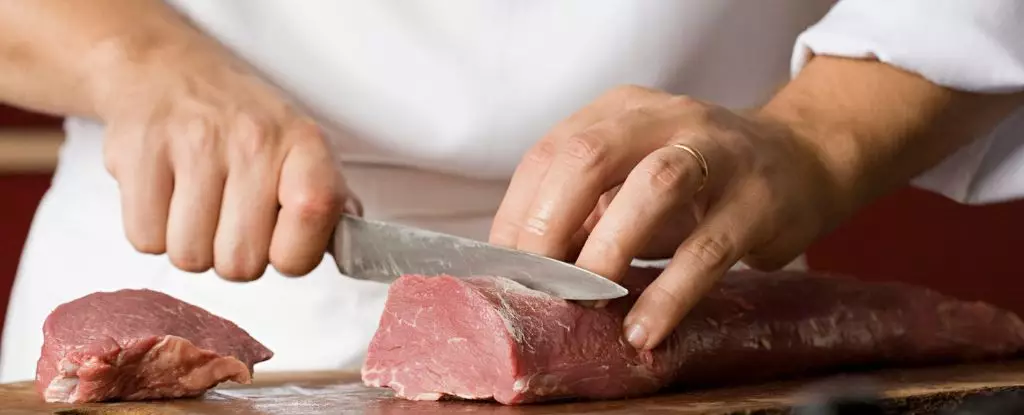In an age where culinary adventurism is often celebrated, the exhilarating experiences of foraging and consuming wild game come with unexpected perils. A peculiar incident involving a Florida man in his seventies serves as a salient reminder of the hidden dangers lurking within what one might consider gourmet opportunities. In 2017, this man consumed feral pig meat and subsequently contracted a rare and potentially life-threatening infection known as Brucella suis. This story underscores the critical necessity for awareness and caution when it comes to eating wild animals, especially in regions where these creatures thrive and pose health risks.
The narrative begins with the man’s seemingly innocuous decision to handle raw feral pig meat. Prior to cooking and consuming this local delicacy, he recalls dealing with the raw meat directly using bare hands. While such a practice may not raise red flags for many, it was this seemingly innocuous moment that laid the groundwork for a serious health complication. It is a stark reminder of the “out of sight, out of mind” mentality that often accompanies our consumption of food that we perceive as wild and natural.
A Slow Build-Up of Symptoms: Delayed Diagnoses
Years would pass before the man recognized the consequences of his culinary adventure. His journey of suffering included a myriad of troubling symptoms such as fever, pain, fluid retention, and eventually the hardening of skin around the implanted defibrillator. The gradual unfolding of his symptoms should raise concerns about diagnostic efficacy in cases involving rare infections. As highlighted by the case study led by Dr. Jose Rodriguez from the University of Florida, the subtleness of symptoms can mask a dire health issue, complicating treatment and prolonging suffering.
Many who liken this infection to common bacterial illnesses miss its cunningness. Brucella suis cleverly tucks away within immune cells, creating a false sense of security—mild symptoms may mislead healthcare providers, distracting them from the underlying, potentially life-threatening infection. This particular case illustrates the unfortunate yet common occurrence of misdiagnosis; initial blood tests revealed a distinct bacterium, which delayed identifying Brucella until it was too late. Such delays contribute significantly to a declining quality of life, leading to extensive hospital stays and prolonged suffering.
The Complexity of Treatment: A Cautionary Tale
Treating B. suis infections is a complex endeavor, particularly when it manages to infiltrate medical devices like defibrillators. The infection spreads through unusual routes, marking a unique challenge for medical professionals. The defibrillator becomes an unintentional nest for the bacteria, complicating effective antibiotic delivery due to insufficient blood flow to such devices. Staggeringly, only one instance of a patient experiencing a B. suis infection requiring complete device removal was documented in a 30-year span of reviewing defibrillator patients.
The Florida man’s ordeal exemplifies the sometimes haphazard nature of medical treatments and illustrates how critical vigilance is in clinical settings. The analytical scrutiny applied to his case led doctors to ultimately remove the contaminated device, but not before a considerable lapse of time filled with ineffective treatments and unnecessary complications. The delayed recognition of the infection reveals cracks within our healthcare system, specifically regarding the need for more vigilance in diagnosing rare pathogens.
Lessons Learned: Rethinking our Relationship with Wild Foods
From anecdotal evidence, one can derive valuable lessons about consumption habits surrounding wild game. First and foremost, individuals must recognize that just because food is sourced from nature does not equate to it being naturally safe. The U.S. is home to over a million feral pigs, and rampant populations indicate a potential endemic risk that is often overlooked. Consumers who engage in hunting or consuming wild game must educate themselves about the risks of zoonotic diseases and advocate for safer practices in handling such foods.
Moreover, the case emphasizes the importance of developing robust guidelines around the consumption of unpasteurized products—be it meat or dairy. It should instigate a conversation within communities about sharing knowledge regarding safe handling practices, symptoms to watch for, and the significant health risks that accompany the consumption of food sourced from the wild.
As we revel in the excitement of hunting and foraging, it becomes imperative to balance that enthusiasm with an educated approach to food safety. The story of the Florida man is not just a tale of misfortune; it is a clarion call for awareness, urging everyone to adopt mindful eating practices in an increasingly adventurous culinary landscape.


Leave a Reply